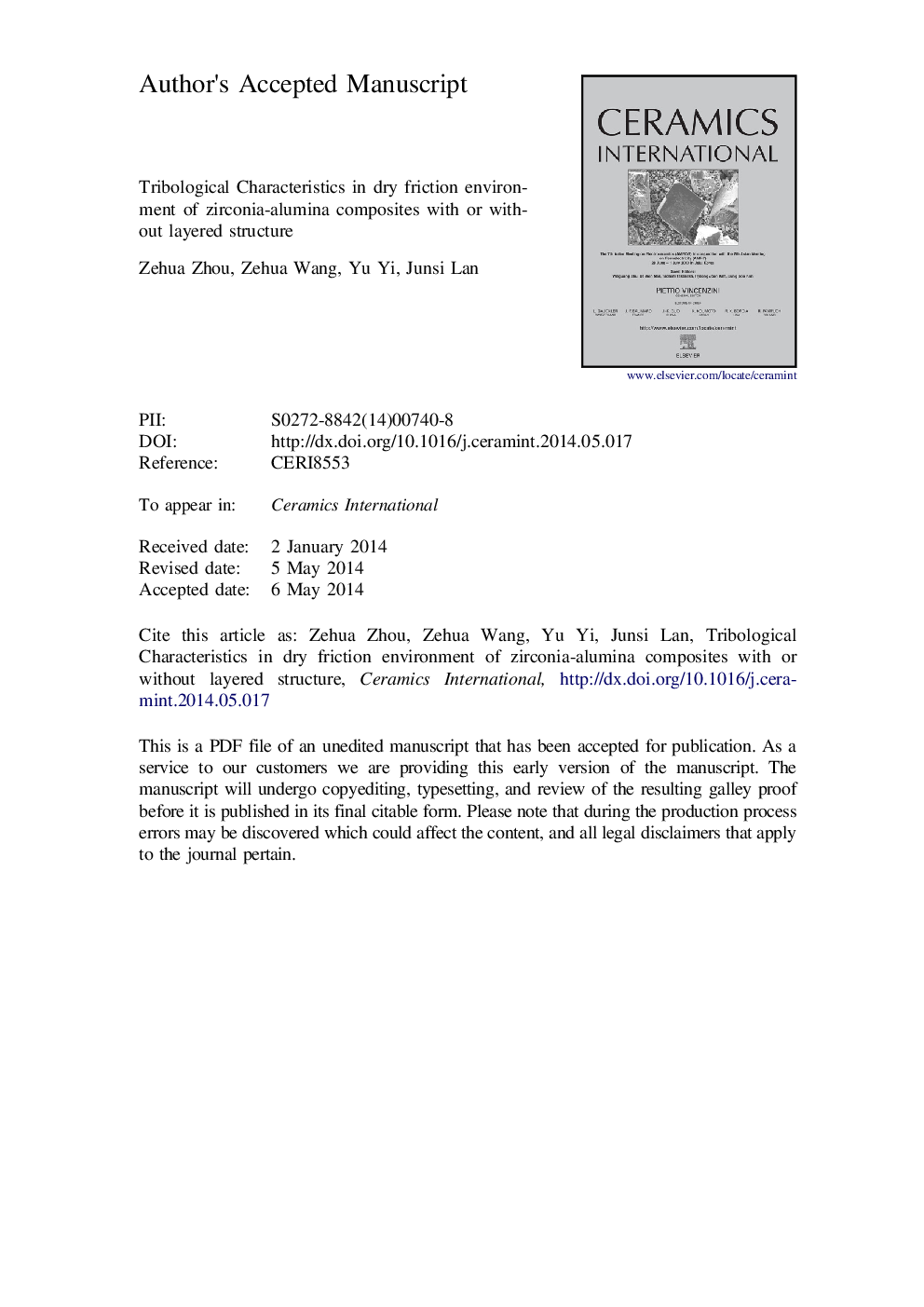| Article ID | Journal | Published Year | Pages | File Type |
|---|---|---|---|---|
| 10625307 | Ceramics International | 2014 | 16 Pages |
Abstract
The tribological characteristics of Zirconia-Alumina composites with or without a three-layered structure in dry friction environment were studied by wear testing, XRD analysis and worn surfaces morphologies. The results indicate that both the friction coefficient and the wear rate of the former are lower than those of the composites without three-layered structure in the same tested conditions. Load as well as rotational velocity affects noticeably the tribological properties of the composites possibly due to the change of the wear mechanisms. For the layered composites, micro fracture dominates wear mechanism at the lower loads but adhesive wear derived from plastic deformation becomes dominating at the higher loads. For the non-layered composites, spalling fatigue resulted from grain breakage and pull-out appears as the dominating mechanism. The special layered structure and composition design brought a residual compressive stress in the layered composites and correspondingly restricted the tetragonal-monoclinic (t-m) phase transform of ZrO2 after sintering. Therefore, there are lots of plastically deformed strips in the worn surface of the layered composites.
Related Topics
Physical Sciences and Engineering
Materials Science
Ceramics and Composites
Authors
Zehua Zhou, Zehua Wang, Yu Yi, Junsi Lan,
